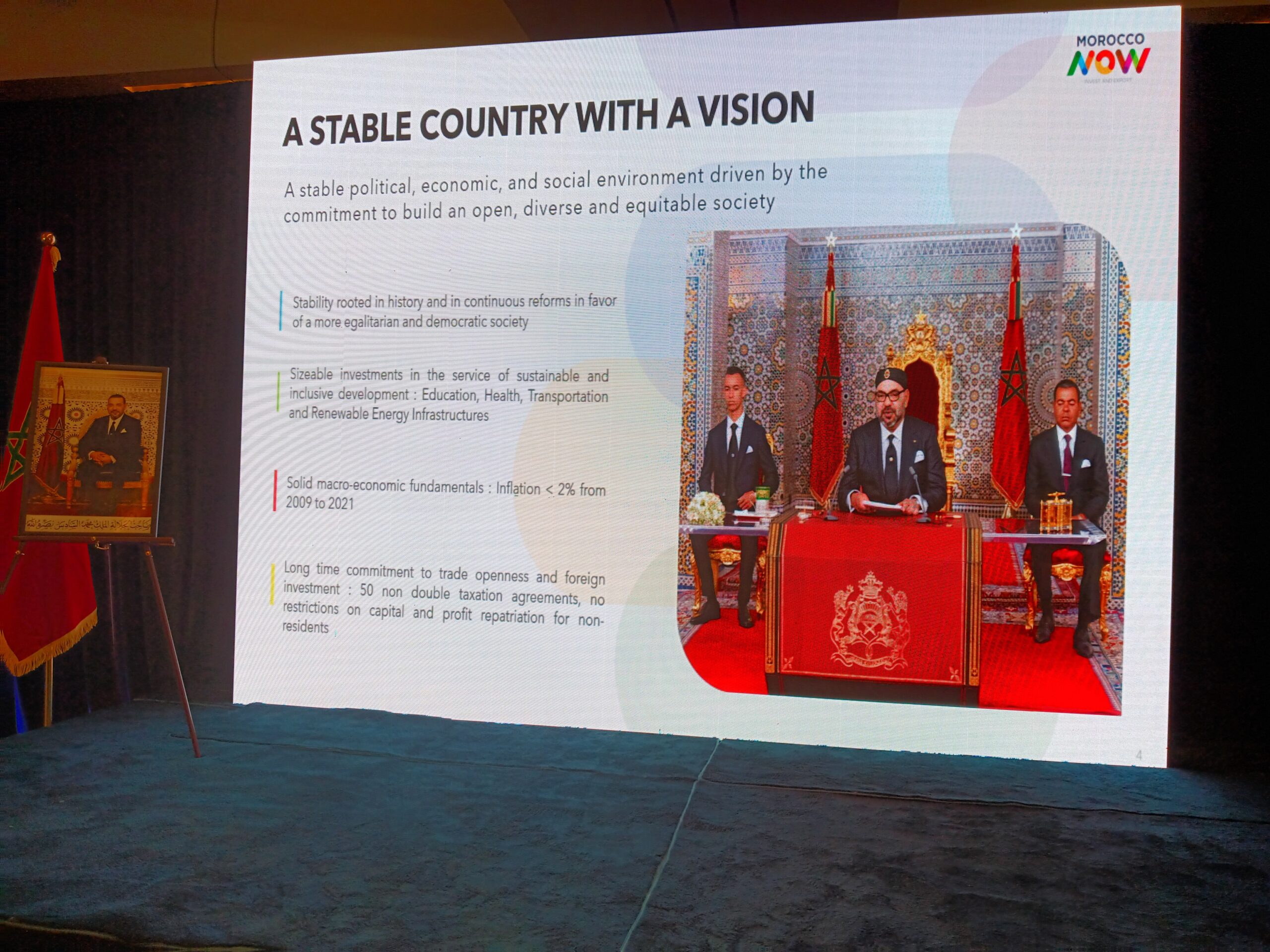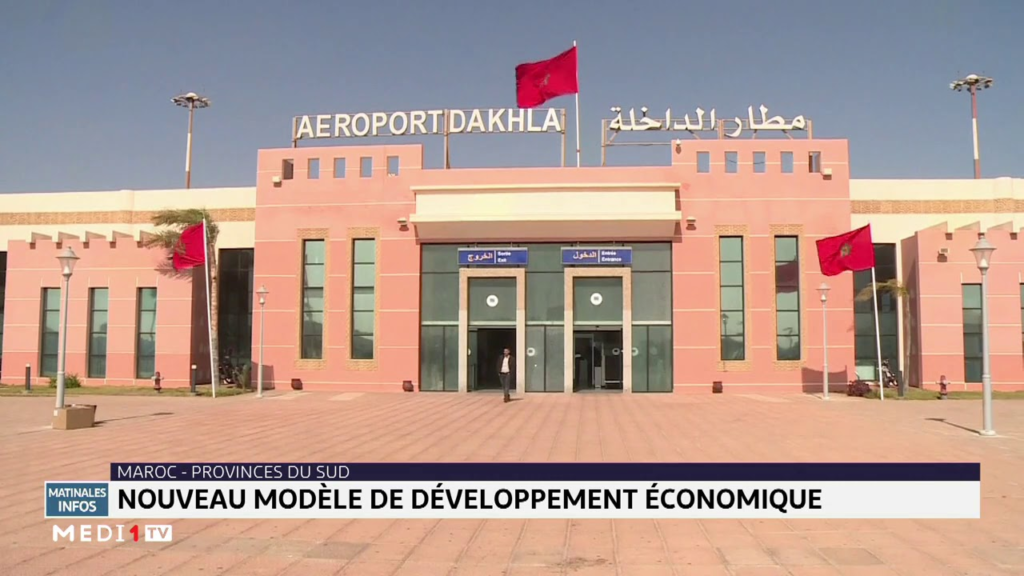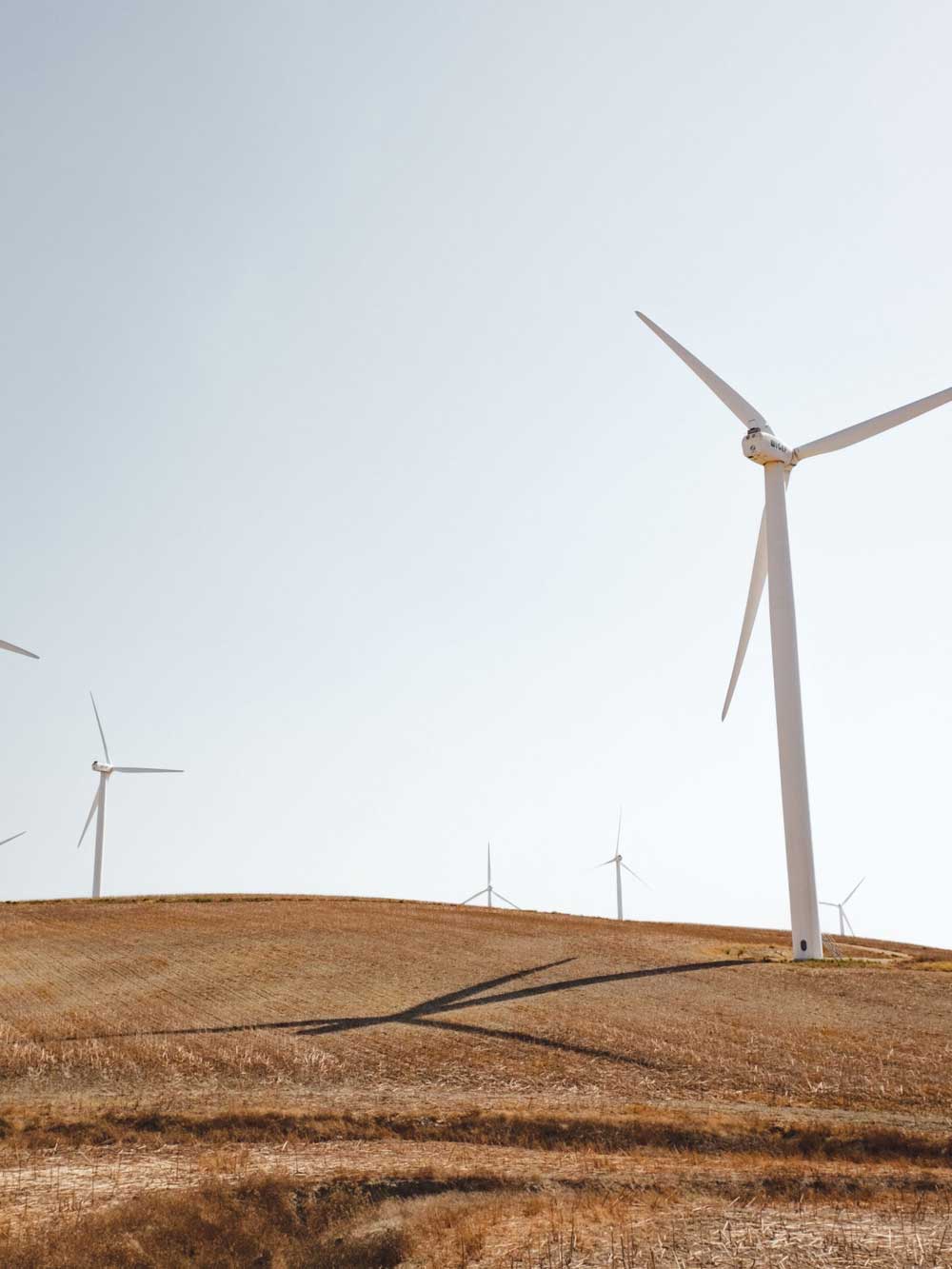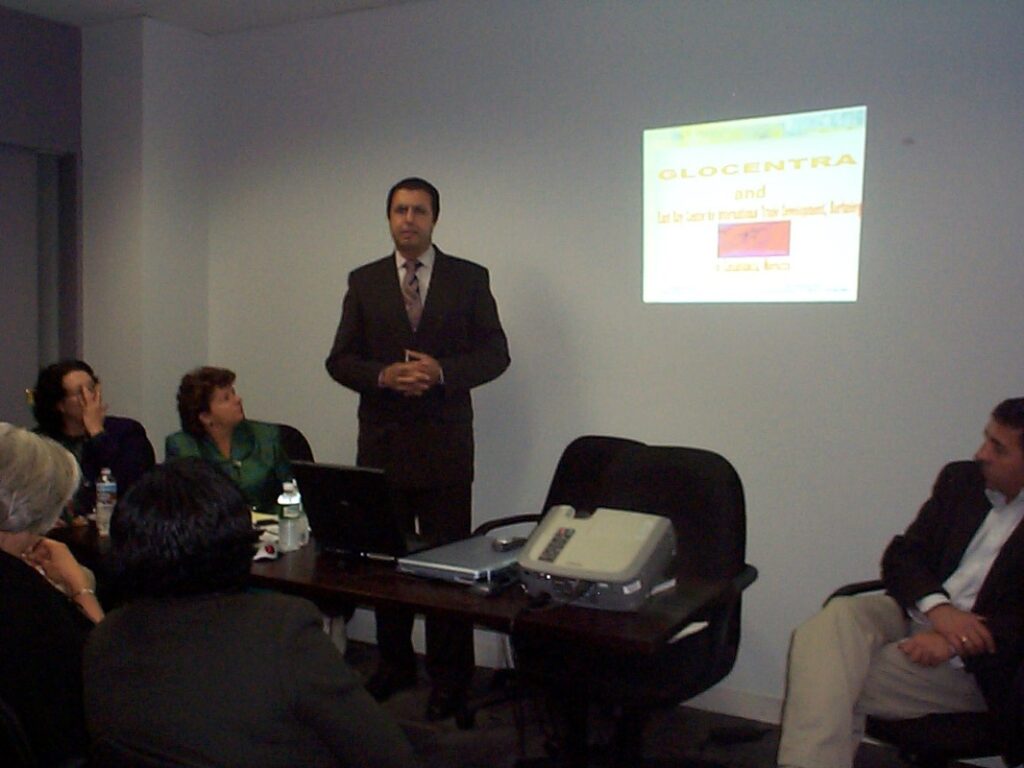Synopsis
This writing finds its raison d’être in the spirit and the will to advance and share the reflection and the visions concerning authentic development and national integration in a perspective of shared responsibility with our Saharan Provinces.
Our southern regions must be projected on the vision of Morocco Today as the roots of Morocco at the historical level and as seeds for the realization of the culture of territorial and national integrity as well as the pillars and feet of the Moroccan body for its march on the path of final reunification and its steps toward the achievement of social progress, leading to the construction of regional economic development.
This achievement of economic competitiveness is another crossing destination leading to the establishment of its local structures favorable to a national self-sufficiency coupled and reinforced by the sustainability of operational efficiency and the consolidation of innovative and high value-added local productions and highly competitive offerings in the international market.
“Change is imperative and necessary,” said former Interior Minister Chakib Benmoussa, chairman of this 35-member commission, presenting the report on May 26, 2021, in Rabat.” See more details at Morocco outlines its vision of a “new development model
Le Maroc dessine sa vision d’un “nouveau modèle de développement”
La commission mandatée par le roi Mohammed VI, pour répondre “à la crise de confiance” révélée par les émeutes du Rif de 2017, vient de rendre sa copie. A special commission appointed by the King of Mohammed VI after the Hirak du Rif presented several avenues for reform after a long reflection that involved all the components of Moroccan society. Read more details at Morocco outlines its vision of a “new development model
Economic inclusion, social protection, “effective education”, “quality” health service, “tax fairness”, “efficient and honest justice”, and “strengthening of individual and public freedoms”, Morocco is looking for a new development model, to be able to respond to the “crisis of confidence” of the population vis-à-vis its institutions.
Through the reading of this introduction and the existing narration in this video, we find no trace of what Dakhla or the other urban centers can acquire as direct responsibility in the establishment and the conduct as well as the realization of a strategy. of multipolar development not only inclusive of the regions but above all based on the anchoring of economic development policies having as content and as a goal:
Polycentric “Metropolization” of Spatial Planning and Synchronization of Regional Productive Units for Homogenized National Development
The Development Model submitted to the King of Morocco failed to mention what I am proposing below:
Establishment of several centers in a dependent territory from a single or dominant center – Dakhla should be transformed into a polycentric metropolis of the Moroccan Sahara coupled with a Hub for services between European capitals and the capitals of African countries.
This regional approach would be a conduit for Moroccan spatial planning based on the notion of institutional unity in regional, economic, and social diversity, coupled with a complementarity of productive and operational para-national synergy.

Dakhla would therefore be a hub of correspondence and transfer as an air and sea link as well as rail, thus creating an integrated logistics modal infrastructure with modes of transport and delivery of people and goods, thus consolidating the links between territorial integrity national and territorial integration of Morocco in trade flows between the major centers of the continents of Europe and Africa. This approach is based almost on density: this is the case with standardized centrality indices which can be broken down at several scales – local or global – and by sector of activity (Guérois, Le Goix 2000; Huriot & al. 2003).
Dakhla métropole polycentrique et le Modèle de Développement au Maroc
Said El Mansour Cherkaoui – 18 Juin, 2021
Cet écrit trouve sa raison d’être dans l’esprit et la volonté de faire avancer et partager la réflexion et les visions concernant le développement authentique et l’intégration nationale dans une perspective de responsabilité partagée avec nos provinces sahariennes et pas seulement comme une inclusion régionaliste désintégrée. Nos régions du sud doivent être projetées sur la vision du Maroc … Lire la suite Dakhla: Régionalisation – Urbanisation au Maroc Maroc Afrique Croissance

The coastline in the development of Morocco and its Atlantic policy
Le littoral dans le développement du Maroc et de sa politique atlantique
Morocco has been making significant strides in developing its southern provinces and Dakhla as a new development cluster. Here are some key points:
Development of Southern Provinces and Dakhla:
- Dakhla, located in the Dakhla-Oued Eddahab region of Morocco, is being developed as a major economic hub with a focus on several key industries:
- The Moroccan government has launched the ‘Dakhla Atlantic Port’ project, a flagship megaproject operating within the development model for Morocco’s southern provinces.
- The port is expected to support various sectors including fisheries, agriculture, mining, energy, tourism, trade, and industry.
- Fishing: Dakhla has a rich fishing industry, and the development of the Dakhla Atlantic Port is expected to boost this sector further. The port has an industrial zone of 270 ha, of which 20% is developed for processing industries, storage areas, administrative areas, and a free export zone.
- Tourism: The region’s unique geography and cultural heritage make it an attractive tourist destination.
- Energy: Dakhla is at the forefront of Morocco’s green energy initiatives. TAQA Morocco, majority-owned by the Abu Dhabi National Energy Company, has announced plans to invest $27.2 billion in a green hydrogen project in the Dakhla-Oued El-Dahab region. The project will generate 6,000 MW of renewable energy, which will be used to produce and export green hydrogen to meet global demand for



- The ‘Tiznit-Dakhla’ expressway project is also underway, which will promote new economic networks spanning from central Morocco to Dakhla.
- The Moroccan government aims to turn the country’s southern provinces into an engine of development at the regional and continental levels.
Maritime Facade for Sub-Saharan Countries of the Sahel:
- The Moroccan King’s Initiative aims to grant Sahel countries access to the Atlantic Ocean3. This initiative is seen as a strategic turning point for these countries.
- The initiative aims to integrate the Sahel into global trade networks by utilizing Morocco’s road, port, and rail infrastructures.
- Four landlocked countries in the Sahel have welcomed this initiative, which requires investments in infrastructure and a co-development approach.
Infrastructure for Logistics and Trade Exchange:
- Morocco has one of the best road systems on the continent and has built approximately 1100 miles of modern roads, connecting most major cities via toll expressways.
- The Moroccan Ministry of Transport and Logistics aims to build an additional 2,100 miles of expressways and 1,300 miles of highway by 2030.
- Morocco has 27 commercial ports that handled 192.1 million tons in 2021 in merchandise traffic.
- The country’s 2030 port strategy calls for nearly $7.5 billion to upgrade and expand the 27 ports along the country’s Atlantic and Mediterranean coasts.
These initiatives and projects demonstrate Morocco’s commitment to developing its southern provinces and Dakhla, serving as a maritime facade for the Sub-Saharan Countries of the Sahel, and building infrastructure to facilitate logistics and trade exchange. However, these are large-scale projects that require significant investment and time to fully realize. It’s also important to note that the success of these initiatives depends on various factors, including regional stability, international cooperation, and sustainable development practices.
“”The Atlantic coast of Morocco has always been an area of varied human and economic settlements, representing a cultural heritage developed on precious landscapes, sites of biological, historical, and archaeological interest. It concentrates most of the activities of the creation of wealth of the country, in particular the large commercial ports, in the process of becoming a locomotive of economic development, such as Tanger Med or the Kenitra and Dakhla projects. This development reflects the opening of the economy to the Atlantic domain and in particular on Africa.”.” Source: Abdellah Laouina: Note de recherche – Le littoral dans le développement du Maroc et de sa politique atlantique, Research note – The Coast in the Development of Morocco and its Atlantic Policy, p. 41-54
Within Moroccan territory, Dakhla would also serve as a model for a hierarchy of intra-metropolitan centers and their respective relations with other centers in Europe and Africa.
It is such a centrality of Dakhla that could instill an industrialization process stimulating economic specialization and an employment / active population ratio favorable to the training and the attraction of qualified labor, thus being able to interweave and harmonize the implementation. place of niche markets for industrial growth through a synergy between the economic, financial, and cultural cogs operating in the other regions of Morocco. This interweaving would facilitate the establishment of a platform endowed with interchangeable infrastructures, operational units, and complementary niches in the polycentric sense.
To avoid the emergence of “single-center” poles and the growth of single-center activities, regional and interregional cohesion would be guided by motivation and an approach favoring innovation, Research and Development, and effective job creation. productive preferably centered on Engineering and mechanical engineering and industrial sectors that can reduce Morocco’s dependence on the import of more efficient and innovative devices, machines, tools, and equipment necessary to the productive operations of factories, industries, and advanced technological productions.
Morocco should thus have the capacity to define and shape as well as produce according to its development needs all the equipment necessary for the materialization of the intermediate stages of its industrial progress.
A synchronized distribution between the areas of influence at the productive level and in the promotion of the region as an essential cog in the functioning, the productivity, and the renewal of the necessary conditions and resources that can stimulate the growth of poles of economic specialization responding to the challenges countries, the construction of the free trade area in Africa and international competitiveness.
HOUSSAIN AZARKANE • 2nd
Specialized Master in BIM and SMART CONSTRUCTION
🌍 New Atlantic Dakhla Port – Morocco 🌍
💲 1.1 billion dollars.
⏰ duration 7 – 8 years.
🏗 the project was won by SGTM, the company with which I had the opportunity to work in the maritime construction project of the Nador West Med port for 4 years, in a consortium with SOMAGEC SUD.
This is the final design of the Atlantic entry point, Dakhla Atlantique, which will be built at the bottom of the sea to allow large ships to access and dock there, and to be connected to a land bridge.
Trade Basin
- 675 ml of quays at -16m / zh;185 ml of service docks;;
- RoRo station of 45 ml;30 ha of medians.
Fishing Basin
-
- 28.8 ha of solid land;
- 1662 ml of quays at -12m / zh of openings;
Ship Repair Basin
- 200 ml of quays at -12m / zh;
- 2018.6 ha of medians.
CONNECTIVITY WORKS
- Sea access bridge: 1,200 ml;
- The road connecting the port to the national road 1: 7 km

This writing finds its raison d’être in the spirit and the will to advance and share the reflection and the visions concerning authentic development and national integration in a perspective of shared responsibility with our Saharan Provinces.
Our southern regions must be projected on the vision of Morocco Today as the roots of Morocco at the historical level and as seeds for the realization of the culture of territorial and national integrity as well as the pillars and feet of the Moroccan body for its march on the path of final reunification and its steps toward the achievement of social progress, leading to the construction of regional economic development.
This achievement of economic competitiveness is another crossing destination leading to the establishment of its local structures favorable to a national self-sufficiency coupled and reinforced by the sustainability of operational efficiency and the consolidation of innovative and high value-added local productions and highly competitive offerings in the international market.

Résultats de recherche pour « Maroc Morocco » – Maroc Afrique Croissance – https://marocroissance.wordpress.com/?s=Maroc+Morocco
https://marocroissance.wordpress.com/2019/05/14/said-el-mansour-cherkaoui-moro-maroc/
★ Morocco on a Sustainable Development Path ★
It is flash-points on topical subjects that can affect various areas of Moroccan society and at multiple levels of the future of the Moroccan economy while addressing cultural intrusions, artistic and literary creations by placing them each in their own and singular expression and that in order to be able to also approach the… “★ Maroc en Voie Durable de Développement ★” Posted on …. Continue reading











